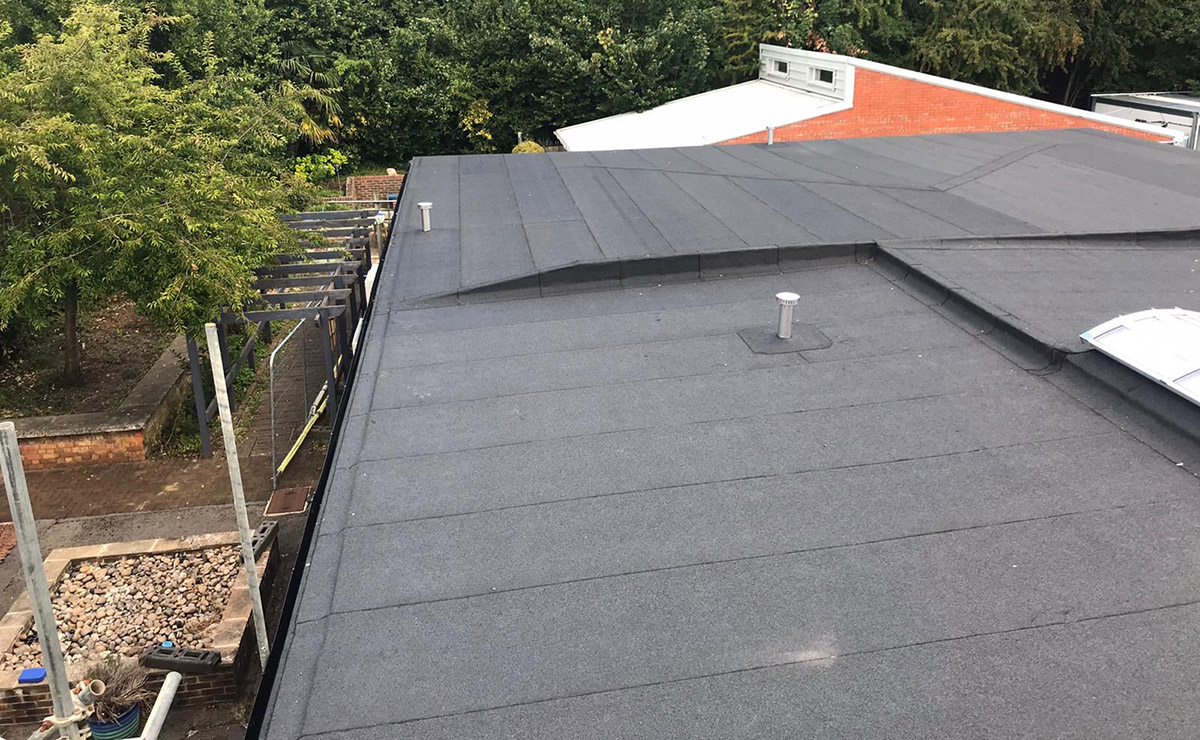
By James Wilkinson, design team manager at flat roof and single-layer tapered insulation specialist, Gradient
PONDING caused by inadequately-designed falls is a significant contributor to flat roofing failure. It’s an issue that can be resolved with the specification of a high-quality tapered insulation system which has been specifically designed, manufactured and installed in order for the roof to fulfil its ultimate purpose: to keep the structure it spans warm and dry. But which tapered system offers the best option in terms of long-term performance and cost?
Tapered insulation offers the best of both worlds when installed as part of a flat roof’s waterproofing build-up. Its multi-functional design not only enhances a building’s overall thermal performance, it manages a roof’s water run-off to ensure it flows into the appropriate outlets or gutters.
If water is not properly dispersed from a roof, its weight will lead to deflections forming and increase the risk of ponding. This additional weight will fast-track the waterproofing system’s wear and tear, thus increasing the likelihood of a worst case scenario: water-based structural damage, one of the most common forms of building failure. Therefore, a well-appointed tapered insulation scheme can extend the life of the building itself, hence the importance of selecting a system, whether single-layer or multi-layer, that is specifically designed to suit a particular application.
Industry guidance
In terms of specifying an insulation system that meets industry standards by taking into account issues such as water run-off, wind load calculation, falls and weight ratio, the Single Ply Roofing Association (SPRA) code of practice offers excellent guidance.
This is freely available online and ideal for installers and specifiers requiring insulation as part of a single-ply system. Similarly, BS: 6229: 2018, the standard that defines best practice in flat roof design and maintenance, provides a learned reference for performance requirements across a range of applications.
Plan to succeed
A site survey ought to be a prerequisite when specifying tapered insulation for flat roofs. In many instances, the initial take-off drawing/specification of a project will differ from what is the ‘reality’ on-site. Therefore, it is always recommended a site visit is carried out prior to deciding on an appropriate insulation solution. This is particularly the case for modular single-layer systems, as they offer little option for cutting and altering once delivered to site. A survey will determine a roof’s dimensions and take into account potential obstructions or openings such as rooflight and drainage outlets, which could affect the layout of a bespoke-designed insulation scheme.
Single or multi-layer option?
Bonded under factory-controlled conditions, single-layer tapered insulation systems are the time and cost-effective alternative to multi-layer solutions: they are ready to install once delivered to site.
The insulation within the single-layer bond will have been monitored for its volume and minimum pull-off performance, leaving installers with the relatively straightforward task of adhering it – in one block – to the roof, followed by the waterproofing. This not only guarantees the insulation will perform as-designed, it significantly reduces application times and material waste. Therefore, whilst a multi-layer solution might appear, on paper at least, to be a more cost-effective option, the benefit is negated by the additional hours it takes to bond and install the insulation layer-by-layer; a process that is eliminated with a pre-bonded single-layer system.
Engage with an expert
Quality is built-in with single-layer tapered insulation systems. Gradient, for example, provides a turnkey service as part of its bespoke manufacture of flat roof and tapered roofing insulation systems. From the initial consultation and pre-design process, to the installation and post-project stages, Gradient’s technical teams work alongside clients to ensure the successful implementation of its individually-tailored tapered insulation schemes which are produced to ISO 9001; one of the most widely adopted management standards in the world.
In summary, when selecting a tapered insulation scheme, it is perhaps worth reiterating the ultimate purpose of its multifunctional performance: to keep a flat roof dry in order to keep the building beneath it warm. Tapered insulation points the way to achieving both – very important – outcomes.








